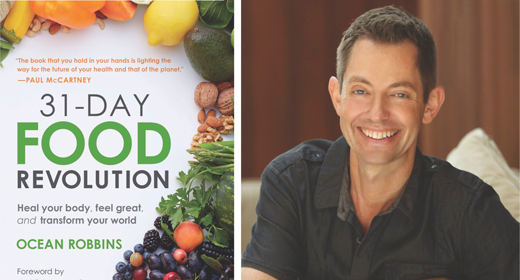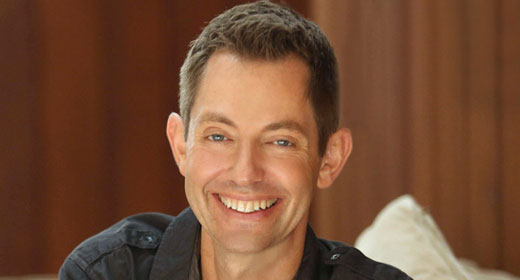by John Davy: All over the world, but particularly in Western Europe, there are now to be found activities
 – schools, communities for the handicapped, farms, hospitals and medical practices, artists and architects, banks and businesses – whose work acknowledges a special debt to Rudolf Steiner.
– schools, communities for the handicapped, farms, hospitals and medical practices, artists and architects, banks and businesses – whose work acknowledges a special debt to Rudolf Steiner.
His life spanned the last part of the nineteenth century and the first part of this [the twentieth century]. But his inspiration is proving capable of reaching into the end of our century with enhanced rather than diminished vigor. Who was Rudolf Steiner? And what is the meaning of this life and work for our time?
Steiner was born in Kraljevec (then in Austria, now in Yugoslavia) in 1861, and died in Dornach, Switzerland in 1925. He thus saw the end of an old era and the birth pangs of a new one. His life echoes the transition intimately. Outwardly, we see the gifted son of a minor railway official growing up in the small peasant villages of Lower Austria. He attends the village schools, and then the modern school in Wiener Neustadt. His father is a freethinker and sees his son as a railway engineer rather than as a priest (the more usual destination for bright boys from the villages). Steiner takes a degree in mathematics, physics and chemistry, and later writes a philosophical thesis for a doctorate. He supports himself through university and afterwards by tutoring. He is drawn into literary and scholarly work. The famous Goethe scholar, Professor Karl Julius Schroer, who has befriended the young man, arranges for him to edit the scientific works of Goethe for a new complete edition. He participates actively in the rich cultural life of Vienna. Then he is invited to Weimar, to the famous Goethe archive, where he remains for seven years, working further on the scientific writings, as well as collaborating in a complete edition of Schopenhauer. The place is a famous center, visited by the leading lights of Central European culture, and Steiner knows many of the major figures of the artistic and cultural life of his time.
In 1894 he publishes The Philosophy of Spiritual Activity, but is disappointed by its reception (we shall return to the significance of this work). (1) Then, as the end of the century approaches, he leaves the settled world of Weimar to edit an avant-garde literary magazine in Berlin. Here he meets playwrights and poets who are seeking, often desperately, for alternatives of various kinds. The city is a focus for many radical groups and movements. Steiner is invited to lecture at the Berlin Workers’ Training School, sponsored by the trade unions and social democrats.
On August 28, 1899 Steiner publishes in his magazine a surprising article about Goethe’s mysterious ‘fairy tale’ The Green Snake and the Beautiful Lily. The essay is entitled Goethe’s Secret Revelation, and points definitely, if discreetly, to the esoteric significance of this story…
… Steiner’s decision to speak directly of his own spiritual research was not prompted by a desire to set up as a spiritual teacher, to feed curiosity or to revive some form of ‘ancient wisdom’. It was born out of a perception of the needs of the time. As we approach the end of our century, it is perhaps easier to appreciate what Steiner meant by times which ‘begin to bring about the impossibility of life’. This lay behind what he described as “my heartfelt desire to introduce into life the impulses from the world of the spirit but for this, there was no understanding.” (2)
It took him nearly two decades to create a basis for the renewing impulses in daily life that he sought to initiate. At first he worked mainly through lectures to Theosophists and others, and through articles and books. These works remain an extraordinarily rich resource which is still far too little known in the English-speaking world. Within quite a short period of years, Steiner surveyed with clarity and intimacy the spiritual realities at work in the kingdoms of nature and in the cosmos, the inner nature of the human soul and spirit and their potential for further development, the nature and practice of meditation, the experiences of the soul before birth and after death, the spiritual history and evolution of humanity and the earth, and detailed studies of the workings of reincarnation and karma. The style is sober and direct throughout, and it often calls for an effort to realize the quite remarkable nature of these communications. For they are not derived from earlier sources, nor was Steiner acting as a spokesman for a spiritual guide. They are fruits of careful spiritual observation and perception or, as Steiner preferred to call it, ‘spiritual research’ – undertaken in freedom by an individual thoroughly conversant with, and deeply serious about, the integrity of thought and apprehension striven for in natural science.
After seven or eight years, Steiner began to add to his work in ‘spiritual science’ a growing activity in the arts. It is significant and characteristic that he should see the arts as a crucial bridge for translating spiritual science into social and cultural innovation. (We are now vividly aware of what happens when natural science bypasses the human heart and is translated into technology without grace, beauty or compassion.) Between 1910 and 1913 he wrote four Mystery Plays, which follow the lives of a group of people through successive incarnations, and include scenes in the soul and spiritual worlds as well as on earth. With his wife, Marie von Sievers, an actress, new approaches to speech and drama were initiated. In this period, too, lie the beginnings of eurythmy, an art of movement that makes visible the inner forms and gestures of language and music.
In 1913 the foundation stone was laid for the first Goetheanum at Dornach in Switzerland. This extraordinary building in wood, with its vast interlocking cupolas, gradually took shape during the years of the First World War, when an international group of volunteers collaborated with local builders and craftsman to shape the unique carved forms and structures Steiner designed. The building stimulated much innovation in the use of form and colour and is now increasingly recognized as a landmark in twentieth century architecture. (3) Yet Steiner was not concerned to build an impressive monument. He regarded architecture as the servant of human life, and designed the Goetheanum to support the developing work of anthroposophy,* and particularly the work in drama and eurythmy.
[*Anthroposophy: Steiner’s preferred term, which he once said should be understood to mean, quite simply, ‘awareness of one’s humanity’. An arsonist caused this building to burn to the ground during the night of December 31, 1922. There survived only the great sculpture of ‘The Representative of Humanity’ on which Steiner had been working in a neighborhood workshop with the English sculptress Edith Maryon. Steiner soon designed another building that was completed after his death and now serves as a centre for the world-wide Anthroposophical Society and its School of Spiritual Science. There is a magnificent stage and auditorium, where the Mystery Plays are given regularly as well as Goethe’s Faust in full, other plays and concerts, and frequent performances of eurythmy.]
As the First World War neared its end, Steiner began to find ways to work more widely and deeply for a renewal of life and culture in many spheres. Europe was in ruins and could have been ready for quite new impulses. Attempts to realize a ‘threefold social order’ as a political and social alternative at that time did not succeed, but the conceptual basis Steiner developed exists as a seed that is even more relevant for today.
Steiner’s social thinking can be adequately grasped only in the context of his view of history, which he saw, in direct contrast to Marx, as shaped fundamentally by inner changes in human consciousness in which higher spiritual beings are actively participating. Just in this century, quite new experiences are awakening in the human soul. (Since Steiner’s time this is a good deal more apparent that it was then.) But we cannot expect to build a healthy social order except on the basis of a true and deep insight not only into the material but also into the soul and spiritual nature and needs of human beings as they are today.
These needs are characterized by a powerful tension between the search for community and the experience of individuality. Community, in the sense of material interdependence, is the basic fact of economic life and of the world economy in which it is embedded today. Yet individuality, in the sense of independence of mind and freedom of speech, is essential to every creative endeavour, to all innovation, and to the realization of the human spirit in the arts and sciences. Without spiritual freedom, our culture will wither and die.
Individuality and community, Steiner urged, can be lifted out of conflict only if they are recognized not as contradictions but as a creative polarity rooted in the essential nature of human beings. Each pole can bear fruit only if it has its appropriate social forms. We need forms that ensure freedom for all expressions of spiritual life, and forms that promote brotherhood in economic life. But the health of this polarity depends on a full recognition of a third human need and function, the social relationships between people which concern our feeling for human rights. Here again, Steiner emphasized that we need to develop a distinct realm of social organization to support this sphere, inspired by a concern for equality not equality of spiritual capacity or material circumstance, but that sense of equality that awakens through recognition of the essential spiritual nature of every human being. In this lies the meaning and source of every person’s right also to freedom of spirit and to material sustenance. These insights were the basis from which Steiner then began to respond to a great variety of requests for new beginnings and practical help in many fields.
Best known, of course, is the work in education and curative education. The former originated in a request from Emil Molt, director of the Waldorf-Astoria cigarette factory, for a school to which his employees could send their children. There are now Waldorf Schools throughout the world. The homes, schools and village communities for handicapped children and adults are flourishing. Biodynamic agriculture originated in a course of lectures at Koberwitz in 1924, held at the request of a group of farmers concerned about the destructive trend of ‘scientific’ farming. It has made its main impact so far in European countries, but is now attracting rapidly growing interest in many other parts of the world. From Steiner’s work with doctors, a medical movement has developed that includes clinics and hospitals and a variety of therapeutic work. From a request by a group of German pastors there developed the Christian Community, a movement for religious renewal. The art of eurythmy, which also serves the educational and therapeutic work, has developed strongly, and there are now a number of eurythmy schools where a full four-year training is given. Other training centres – for teacher training, agriculture, the arts, social work, and general orientation in anthroposophy – have grown in recent years.
Rudolf Steiner died on March 30, 1925, surrounded by new beginnings. The versatility and creativity he revealed in his later years are phenomenal by any standards. How did he achieve all this?
The last part of the twentieth century is bringing a growing recognition that we live within a deeper reality we can call spiritual, to which at present we have direct access only through altered conditions of consciousness. We are also learning to see that these realities were known in the past, described in other images and languages, and were the source of all great religions and spiritual teachings. They have been obscured and forgotten for a while as our scientific culture devoted itself to the material world revealed by the senses.
Many individuals have glimpses during their lives of spiritual realities. Some recollect a more consistent experience in childhood. A few achieve some form of enduring insight as adults. Rudolf Steiner spoke little of his spiritual life in personal terms. But in his autobiography(4) he indicates that from childhood he was fully conscious of a world of invisible reality within the world of everyday. His inner struggle for the first forty years of this life was not to achieve spiritual experience, but to united this fully with the forms of knowledge and insight of our time, and in particular with the language and discipline of natural science. Historically, this can be seen as the special challenge and contribution of Steiner’s life and work. He himself saw the scientific age, even in its most materialistic aspects, as an essential phase in the spiritual education of mankind. Only by forgetting the spiritual world for a time and attending to the material world, he said, could there be kindled new and essential faculties, notably an experience of true individual inner freedom. Steiner indicated that his own capacities to meet, in the most practical way, the life questions and working needs of people from many walks of life had their origins in the struggles of his earlier years, when he kept almost complete silence concerning his inner experiences, and gradually learned to grasp and articulate their relationship to the mode of consciousness from which science arises. His book The Philosophy of Spiritual Activity embodies a first fruit of these struggles – he himself described it as “a difficult ascent to freedom”. Studied more intimately, this book contains the basis for a path of knowledge that can lead the soul to discover spiritual experience and reality right into the world of ordinary thought and experience. Along this path, Steiner sought to develop a spiritual science that is a further development of the true spirit of natural science.
This path led him in his thirties to awaken to an inner recognition of the ‘turning point of time’ in human spiritual history, brought about by the incarnation of the Being we know as the Christ. (5) He saw that the meaning of this event transcends all differentiations of religion, race or nation, and has consequences for all humanity; we are as yet aware only of the beginnings of these. This also led him to know the new presence and working of the Christ, which has begun just in this century, not in the physical world but in the sphere of invisible life forces of the earth and mankind. (6)
Steiner was therefore not concerned to bring old teachings in new forms, nor to promulgate doctrines of any kind, but to nurture a path of knowledge in freedom, and of love in action, that can meet the deep and pressing needs of our times. These are the ideals, however imperfectly realized, by which those who find in anthroposophy a continuing inspiration for their lives and work seek to be guided.
This is a heavily edited version of an article originally written by John Davy, the former Science Editor of the UK Observer newspaper








































